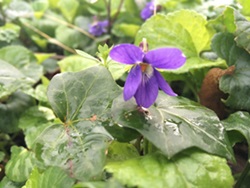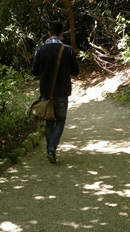
With the fantastic weather we have been having lately it has finally began to feel like summer and I for one could not be more happy. Spring is a fantastic time to get out and really appreciate nature as it begins to wake from its slumber. While many people reserve visits to to parks and woods for the summer time, when you can enjoy a picnic in the warmth, I love a visit to my local woods to explore and seek out plants.
Early spring is a fantastic time to visit woods such as Donadea Forest Park or Killinthomas Woods in Rathangan. While we are still a good few weeks off on the spectacular display of bluebells which erupt in Killinthomas, there are many other floral delights to be enjoyed in both woods. The only problem is that you really have to look for them and often they can be over looked.

One of the highlights of a walk at the moment is the emergence of Common Dog Violets. Viola riviniana is an extremely small delicate native flower that starts to appear around Ireland in early March. It has been known to flower in parts right up until May, with some repeat flowering then again between August and October.
The common dog-violet is very similar to violets that you would buy in a garden centre however they are much smaller in size. Traditionally they are a dusky purple colour but they can hybridises (cross breed) with other violets which means in some parts you can find slight variations in colours. The flowers can be commonly found in woodlands and along roadside banks.
While the flowers do standout clearly on the forest floor and are easily identified by their iconic flowers, wild violets can also be identified by their heart-shaped leaves. The leaves are relatively small compared to commercial varieties but are still easy to find in large clumps.

With all wildflowers it is always important to remember that you should not dig them up to replant in your own garden. If you do wish to have some in your own garden collecting seeds is much more environmentally friendly. However this should also be done respectfully by ensuring some seed is left behind for more plants to grow in the wild.

My Name is David Corscadden and I have just finished my degree in horticulture from UCD. I have a keen interest in wildlife friendly gardens or as I like to call them “Wild Gardens”. I have in the last year taken a u-turn in what I thought I would do after college. I have moved more in to the literature side of horticulture and plan to do a masters in journalism next year.
Source: Beyond the Wild Garden – Floral Discoveries in Woods – David Corscadden






